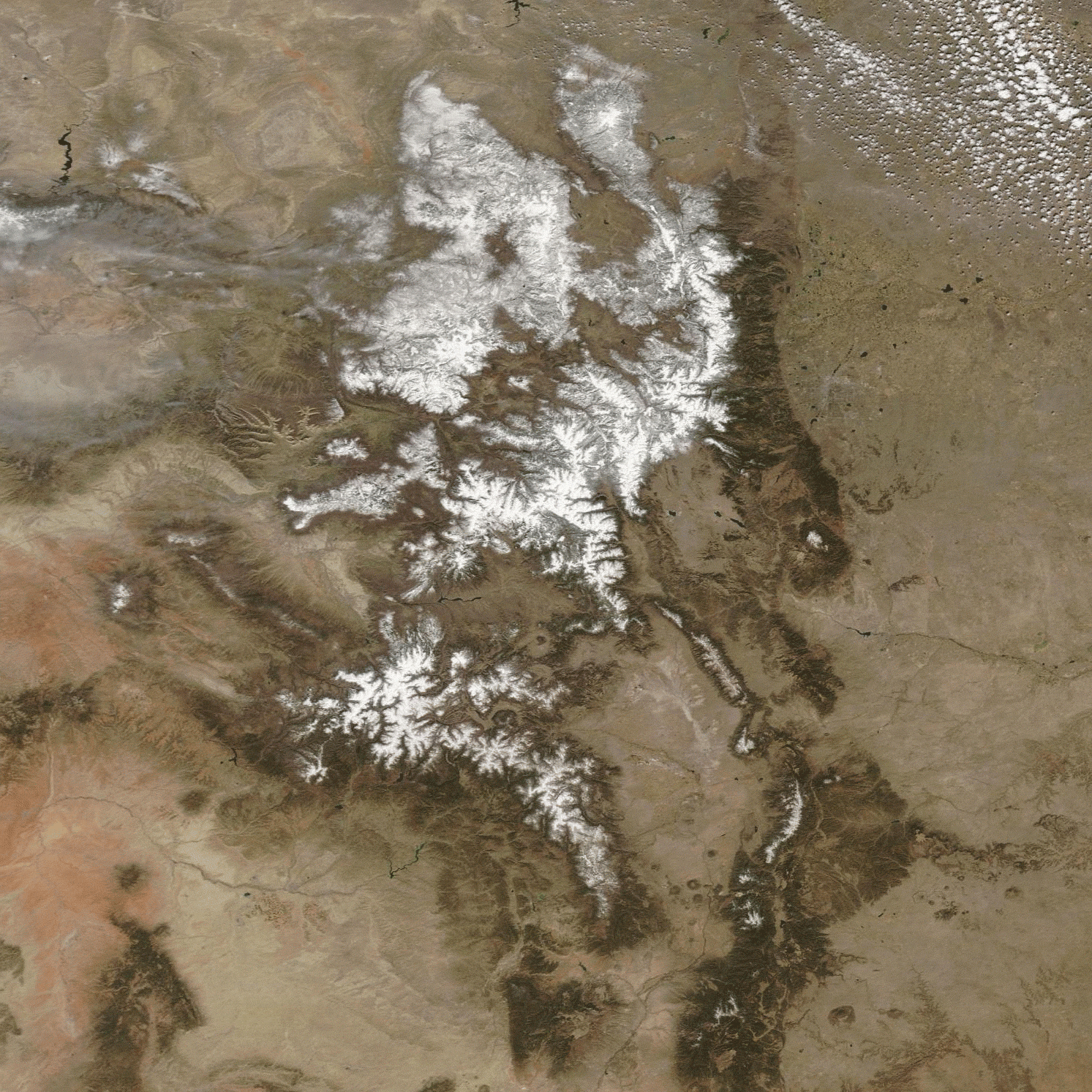Images acquired by NASA's Terra satellite show just how much more snowpack accumulated in the Colorado Rockies this past winter compared to last winter. (Images: NASA Worldview. Animation: Tom Yulsman) As the animation of satellite images above shows, this past winter has brought desperately needed snowfall to a large portion of the American West. It consists of images captured by NASA's Terra satellite, centered on the Colorado Rockies — one on April 18 of last year, and the other this past April 19th. All that extra white stuff tells the tale better than any statistics. And looks aren't deceiving. For Colorado as a whole, snowpack looks to be about the third highest on record. In fact, many measuring sites in Colorado experienced their wettest spring on record, according to Paul Miller, a hydrologist for the Colroado River Basin Forecast Center. Temperatures also were relatively cool, limiting the kind of premature snowmelt that has been seen with increasing frequency in recent years. The result: "It has just been a very beneficial spring," Miller says. And that's especially good news for water supplies in the Colorado River Basin. For the past 20 years, drought, aridification from warming temperatures, and increasing consumption, have caused water levels in the region's two largest and most critical reservoirs — lakes Mead and Powell — to drop to very concerning levels. That's concerning because about 40 million people in seven states, multiple Indian tribes, and Mexico, depend on water in the basin. That water also is the lifeblood of a $1.4 trillion economy. But snow news is indeed not necessarily good news. As Bureau of Reclamation hydrologist Shana Tighi puts it:
While we’re pleased to see above average snowpack, and we consider ourselves luckly to see this kind of improvement, one above average year is not going to end an extended ongoing drought, and it's not likely to reduce substantial risks facing the basin. We got lucky this year.
As of the end of March, Lake Powell was at 37 percent of capacity, and Lake Mead was at 42 percent. Even though flows into the latter reservoir are projected to be at 130 percent of average, it would take multiple years like this to bring the water back up to comfortable levels. Don't count on that happening. Tighi points out that after a very wet year in 2011, people began speculating that a long-term drought in the Colorado River Basin was over. But 2011 "was followed by two of the driest years on record," she notes. "We consider ourselves lucky that we got this one year reprieve. But luck and hope is not a way to manage and plan for the future." The reprieve does appears to forestall a first-ever shortage declaration by the federal government that would occur when Lake Mead's level drops to 1,075 feet above sea level. That declaration would trigger significant mandatory cutbacks in water use. "It does look like we’ll avoid shortage in 2020," Tighi says. But with a possible return to low snowfall, plus continued drying from a warming climate, "we could very well be in a shortage in 2021."














